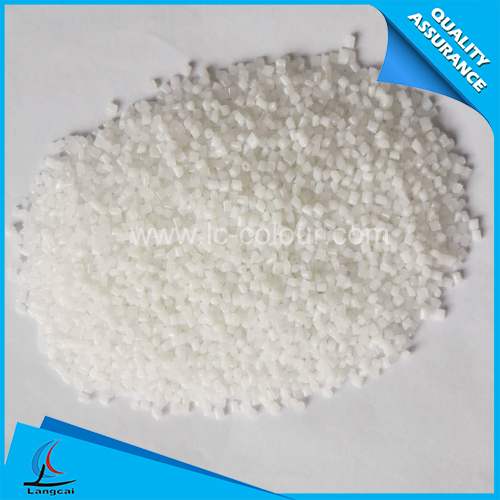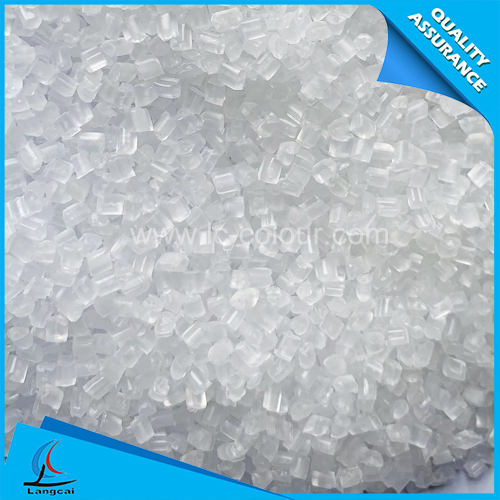- Nonwoven Fabrics
- Tailor Made Masterbatch
- Plastic Masterbatch
- Chemical Fiber Masterbatch
- Functional Masterbatch
- Machinery
- Spunbond PP Nonwoven Masterbatch
- Mono Color Masterbatch
- Liquid Color Masterbatch
- Non-woven Masterbatch
- Polyester Fiber Masterbatch
- Nylon Fiber Masterbatch
- Polypropylene Fiber Masterbatch
- Lab Nonwoven Machine
- Lab BCF Machine
- Dryer
- Filler Masterbatch
- Mono Color Masterbatches are a stable choice for coloring textile and plastic products
- The double increase in foreign reserves and gold reserves has brought favorable conditions for the development of the textile industry
- Environmental protection policies promote technological innovation and green development in the color masterbatch industry.
- An Overview of the Production and Application of Mono Color Masterbatch for Yantai Liangcai Plastic Technology
- Analysis of the Core Technical Advantages of Mono Color Masterbatches!
- The international maritime shipping market has witnessed a round of intense price hikes
- Phone:00836 - +86-535-8484358
- Email:wendy@ytlc-colour.com
- Address:DALAN INDUSTRIAL PARK, ZHANGXING TOWN, ZHAOYUAN CITY, SHANDONG, CHINA
It was learned from the 2023 Xinjiang Cotton Industry Development Forum and Xinjiang Cotton production and marketing docking meeting that as of the end of October, there were 3,725 textile and garment enterprises in Xinjiang, an increase of about 5.7 times over 2014. Among them, more than 1,350 enterprises have been attracted to invest in Xinjiang from other provinces and municipalities.
"Xinjiang has become a new highland for the development of China's textile and garment industry." Autonomous region people's government deputy secretary-general Liang Yong said.
The rapid development of Xinjiang's textile and garment industry is closely related to Xinjiang's unique advantage in raw materials. This year, Xinjiang's cotton planting area is 35.6085 million mu, and the 25 cotton-growing counties (cities) in Xinjiang account for 90 percent of the region's cotton planting area. The number of cotton planting farms in the XPCC has been reduced from 103 to 78, and cotton production has been further concentrated in advantageous cotton areas.
"Benefiting from the unique advantages of Xinjiang cotton, the cotton textile industry chain is accelerating its extension." Liang Yong said. From 2014 to 2022, the investment in fixed assets of Xinjiang's textile and garment industry has accumulated 285.9 billion yuan, with an average annual growth rate of 20%, ranking first in the growth rate of investment in fixed assets of various industrial categories in Xinjiang.
From 2014 to 2022, the investment in fixed assets of Xinjiang's textile and garment industry has accumulated 285.9 billion yuan, with an average annual growth rate of 20%, ranking first in the growth rate of investment in fixed assets of various industrial categories in Xinjiang. In 2022, Xinjiang's production capacity of yarn, cloth, chemical fiber and clothing will be 5.11 times, 13 times, 50.8% and 4.66 times that of 2014. In the first nine months of this year, Xinjiang yarn production of 1.726 million tons, an increase of 14.8%, cloth production of 926 million meters, an increase of 41.2%, chemical fiber production of 619,000 tons, an increase of 18.8%.
It is worth mentioning that polyester fiber manufacturing has achieved historic breakthroughs. The 300,000-ton polyester chemical fiber project of the First Division of the XPCC in Alar City has been completed and put into operation by the end of 2022, achieving a breakthrough in polyester fiber manufacturing in Xinjiang. Sino-thai 250,000 tons polyester staple fiber project will also be put into production by the end of this year. "This marks the realization of cotton, viscose fiber and polyester fiber in Xinjiang's textile raw materials, laying the foundation for the coupled development of Xinjiang's two major resources of cotton and oil, and creating conditions for Xinjiang to accelerate the construction of textile and garment industry gathering highland and export processing base." Liang Yong said.
On March 19 this year, the first phase of Xinjiang Yuxin New Materials Co., Ltd. was officially put into operation, with a total investment of 2.9 billion yuan for the construction of 300,000 tons of polyester fiber, elastomer, weaving and public works projects. The company plans to build projects with an annual output of 1 million tons of polyester fiber, elastomer, weaving, printing and dyeing and supporting cogeneration in 6 years, opening up the "last kilometer" from petrochemical to textile and clothing.
It is understood that the textile industrial park project of Xinjiang Yuxin New Materials Co., Ltd. is a comprehensive project integrating polyester, chemical fiber, weaving, printing and dyeing. The project is the only polyester chemical fiber project under construction in Northwest China. The official operation of the project not only fills the gap of polyester chemical fiber in Northwest China, but also opens up the last kilometer from petrochemical industry to textile and clothing. It has improved the complete industrial chain from PX (Wupetrochemical) and PTA (Xinjiang Zhongtai) to polyester chemical fiber and textile clothing in Xinjiang, and has attracted a batch of downstream enterprises such as 20,000 units of A Jing loom and supporting printing and dyeing comprehensive textile projects with an investment of 10 billion yuan, and Shengze Textile and weaving 10,000 units of water-jet loom Industrial Park.
Declaration: The content of this article is organized from the Internet, and the copyright belongs to the original author; If there is infringement, please inform in time and contact to delete.
- Mono Color Masterbatches are a stable choice for coloring textile and plastic products
- The double increase in foreign reserves and gold reserves has brought favorable conditions
- Environmental protection policies promote technological innovation and green development i
- An Overview of the Production and Application of Mono Color Masterbatch for Yantai Liangca
- Analysis of the Core Technical Advantages of Mono Color Masterbatches!
- The international maritime shipping market has witnessed a round of intense price hikes
- Why choose Mono Color Masterbatches? Three major advantages highlight value!
- How can the refined cotton industry navigate through the trade fog between China and Japan
- The application advantages of Plastic Masterbatches are remarkable!
- The "Symbiotic code" between domestic and overseas markets


